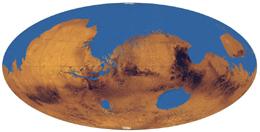THOSE of us who support the careful and well-regulated use of animals for scientific and medical advancement are well aware that it remains controversial. Animal experiments are essential for the development of new medicines, and for safety testing, but are vocally opposed by some.
So it is with growing concern that we read the latest in a string of scientific papers highlighting problems with the way animal research is conducted. The accusation is that animal experiments are too often poorly designed, conducted, reported and reviewed.
Not only does this give ammunition to the opposition, it allows some to claim that animal studies are a misleading guide to what might happen in humans, and also that animals are suffering needlessly in useless experiments.
The use of animals is a privilege, and must always be undertaken responsibly. We must therefore face up to these criticisms and assess what needs to be done.
The use of animals in research is a privilege and must always be undertaken responsibly
One of the papers causing concern is an analysis of more than 1350 animal experiments on the treatment of stroke (PLoS Biology, vol 8, p e1000344). The authors used statistical tools to predict that a further 214 experiments had been conducted but the results never published - the so called "file drawer problem".
That is 1 in 7 studies that never see the light of day. The authors concluded that this publication bias has probably distorted the collective findings of the published studies, as research usually remains unpublished because it failed to find any positive effect of a treatment.
Although the results cannot necessarily be applied across all animal research, it is nonetheless cause for concern. The danger is that humans may be put at risk because potential new medicines are moved into clinical trials prematurely.
Another paper reveals perhaps an even bigger problem. The authors chose 217 animal studies at random and analysed their quality in terms of experimental design, statistical analysis and reporting of results. Only 59 per cent of the studies stated the objective of the study and the number and types of animals used. More than 80 per cent failed to say whether the researchers used randomisation or blinding - standard tools in much biomedical research (PLoS One, vol 4, p e7824).
There have been other papers suggesting that many animal studies are poorly designed, using too few animals to be statistically valid, for example.
One note of caution is that animal studies are highly diverse. Most are part of basic or applied medical research, but animals are also used in pre-clinical safety testing, veterinary development, environmental studies and various types of fundamental research. It would be wrong to suggest that these different types of research should be designed and analysed the same way.
Even so, these various problems need to be tackled. Doing so will require a willingness to confront the issues and improve practices.
The first area that needs to be dealt with is publication bias. The non-publication of negative results is a serious problem in many fields of research. Reducing it in animal research would bring clear benefits, not least ensuring a sound basis to move from animal studies into clinical trials.
The recognition of publication bias in clinical trials involving humans led to the introduction of registration systems to keep track of all relevant trials. It is not inconceivable that we might move towards a similar registration system for animal studies. Initiatives are already under way in some fields of research, with stroke studies a notable example. Collaboration would need to be international, since the missing papers could come from anywhere.
Journals can help. One prominent publication, the British Medical Journal, now welcomes studies with negative results as long as their research questions are important and relevant. Open-access online publishing also presents opportunities for wider access to the buried data.
Another area where weaknesses exist and improvements are needed is the way animal studies are written up in journals - failure to report the number of animals used, for example. The UK National Centre for the Replacement, Refinement and Reduction of Animals in Research (NC3Rs) has been working with scientists, journal editors and research funders to develop guidelines. These will set out the basic information that should be included, based on successful guidelines for reporting human clinical research developed by an international group of biomedical researchers and journal editors calledCONSORT.
The design and statistical analysis of individual experiments also need to be improved. While there are plenty of well-conducted studies out there, ideally every research project - whether using animals or not - should be well-designed and the results analysed using the most appropriate statistical method.
Funders have a role to play here by checking experimental design. Regulatory authorities could also require the panels who evaluate proposed projects to include sufficient statistical expertise. This measure has been included in the newly revised European Union regulations on animal experiments.
Many of the initiatives in these areas come from researchers themselves. Far from accepting the status quo, they strive to achieve better scientific results. With effort and education, these difficult issues should be eminently solvable.
Animal research remains a small but vital part of the biomedical research endeavour. Let's make sure we get it right so that the greatest good is achieved for the least harm to animals.
Simon Festing is chief executive of Understanding Animal Research, a London-based organisation which seeks to promote understanding and acceptance of the need for humane animal research
http://www.newscientist.com/article/mg20627635.500-dont-waste-lab-animals.html











